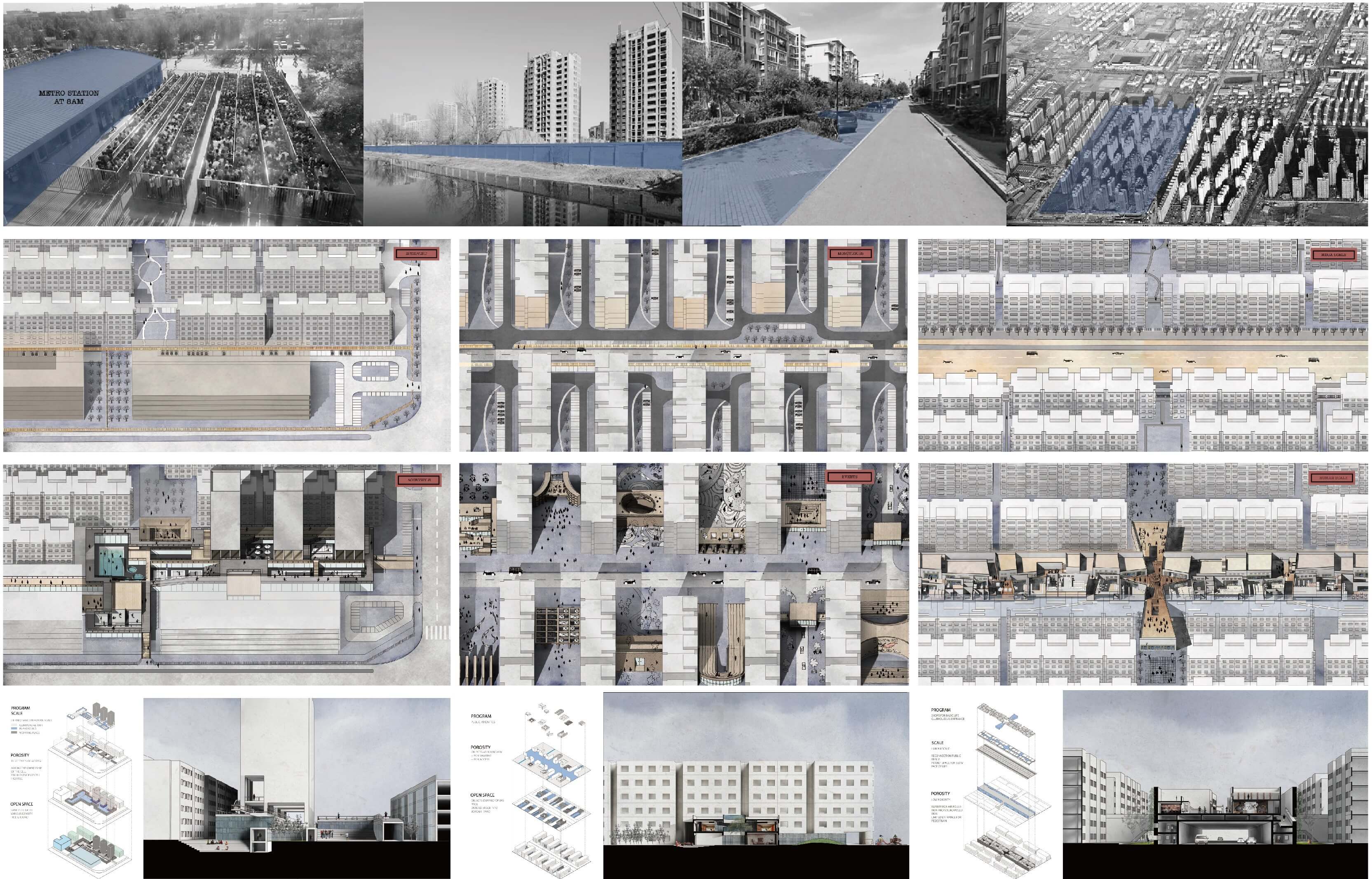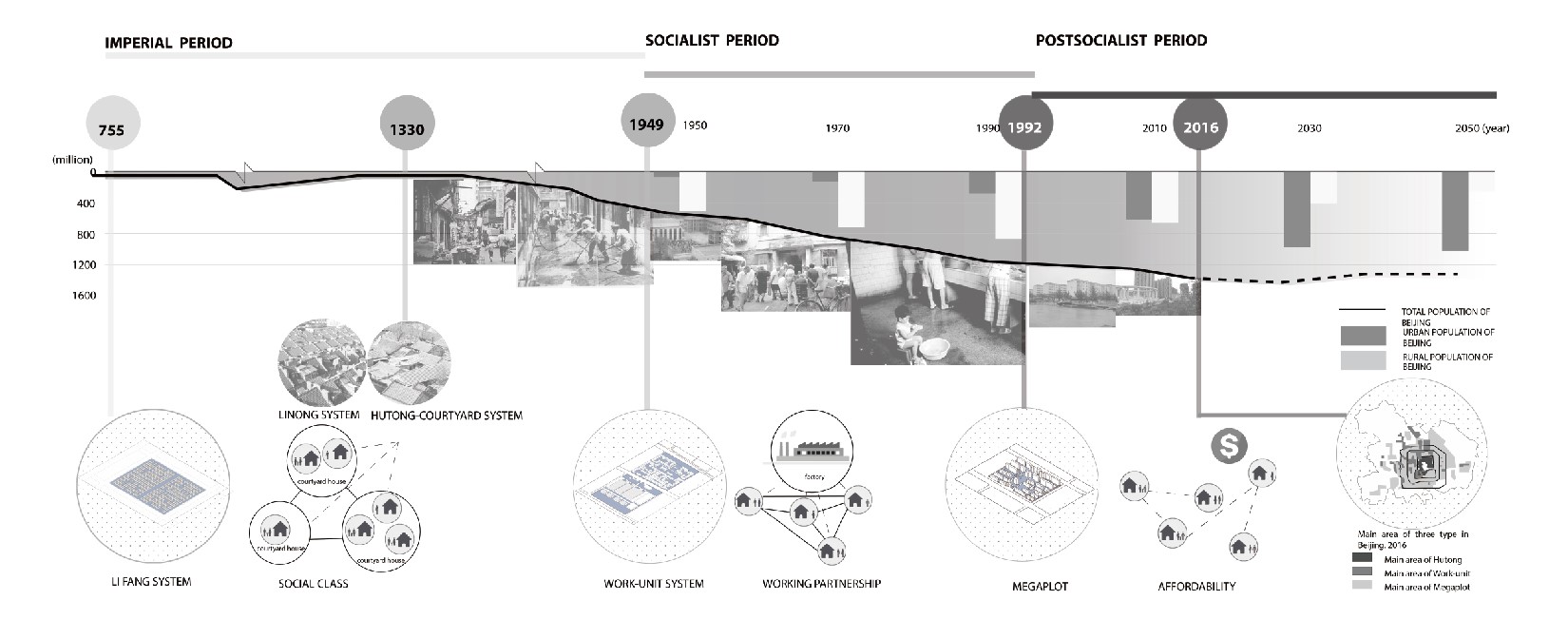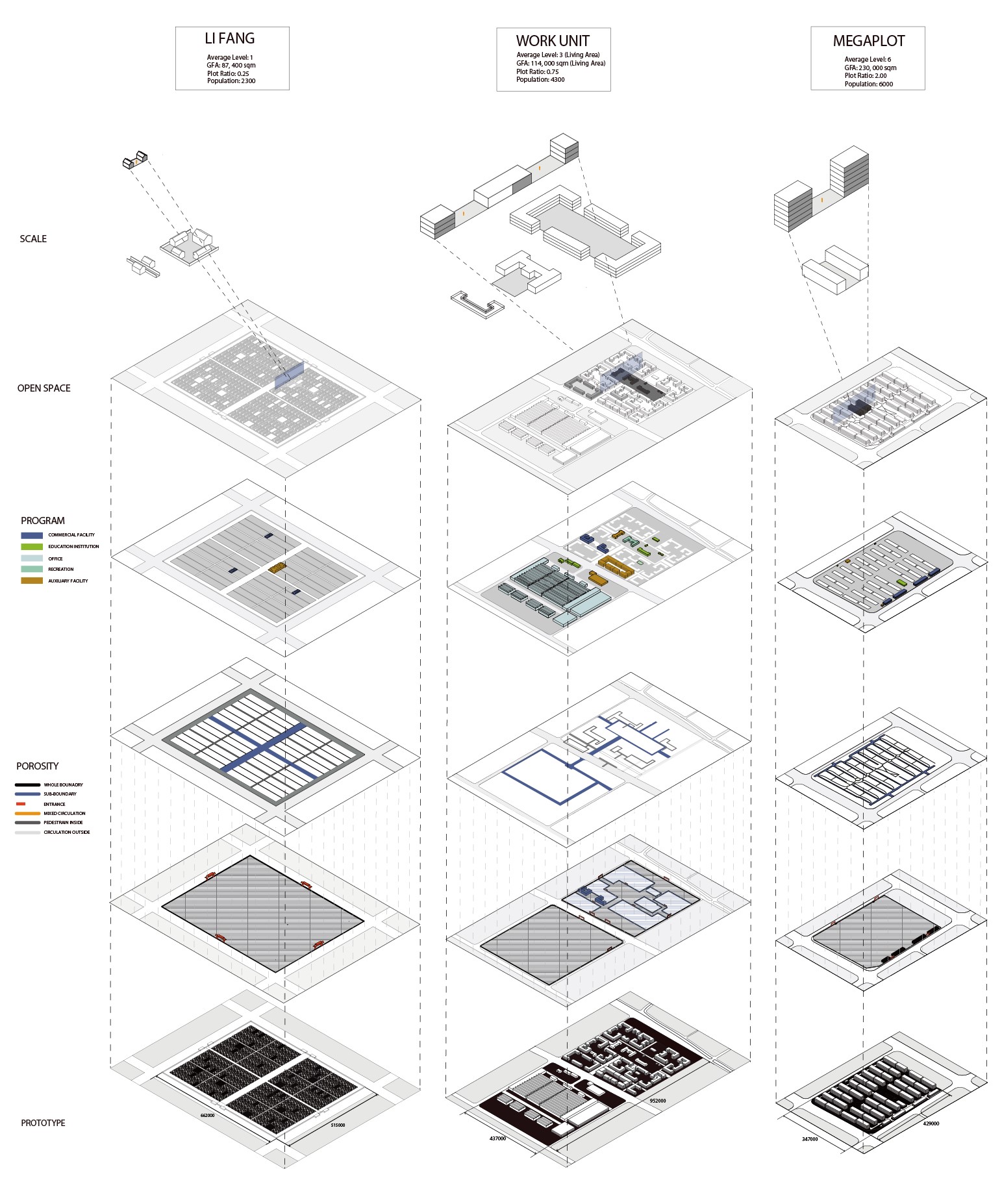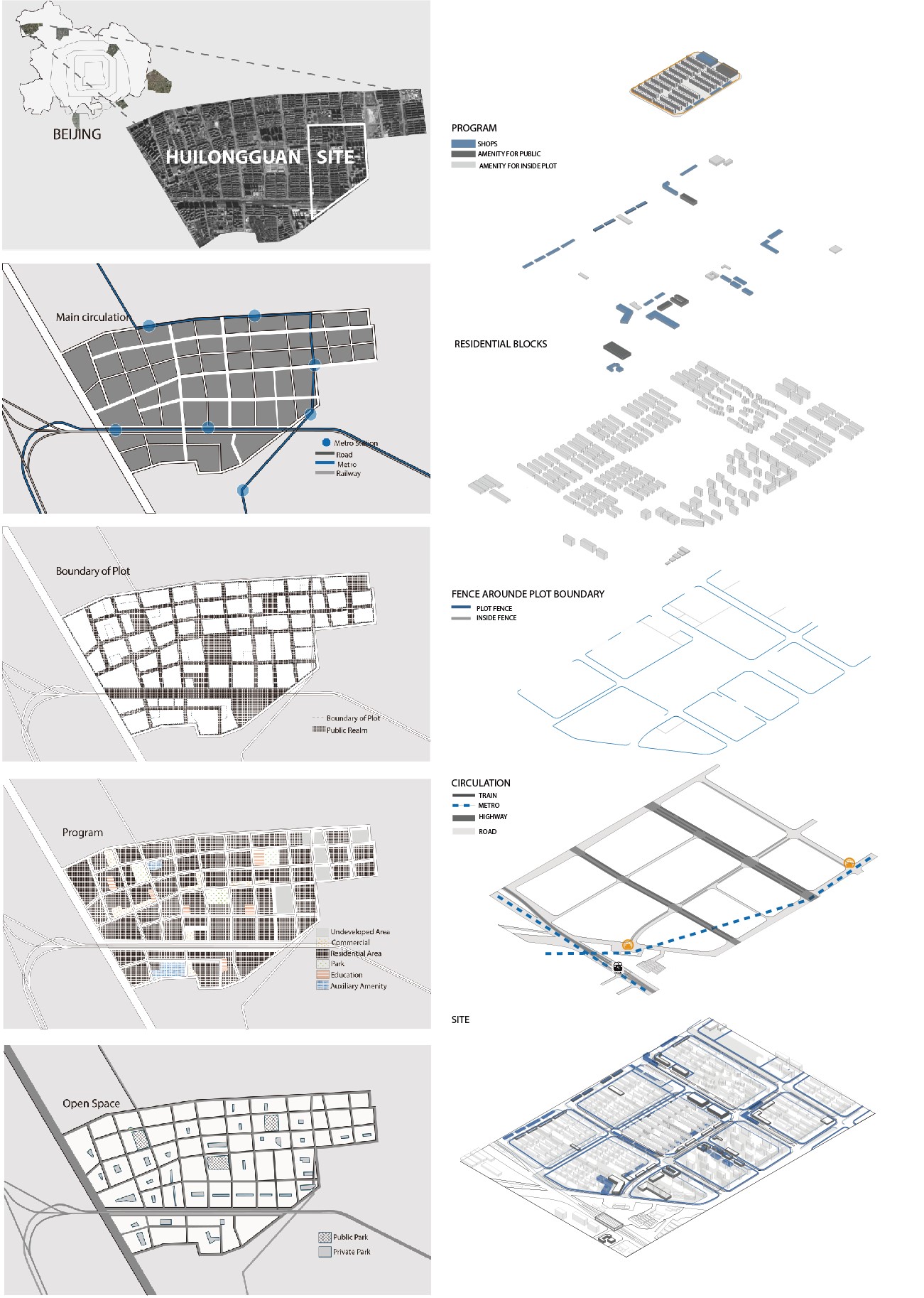





Re-defining the Cellular City
台灣 / taiwan
翁文婷 / Weng Wenting
當代中國的新城建設以巨大尺度的總體規劃為主導。由於歷史發展,社會階層以及經濟性等的影響,巨型封閉社區作為城市的基本單元在新城中不斷被複製。典型的巨型封閉社區通常被圍牆圍合只允許業主進入,內部提供基本生活的設施及活動廣場。 這些社區像孤島一樣與城市隔離,忽略人體尺度,導致了新城功能單一,彼此隔絶而成為“睡城”。歷史上中國的城市規劃經歷了不同的階段,其中三個以“單元式”的方式構成,他們分別是封建時期的里坊城市;五十至八十年代的單位式規劃;以及當代由巨型封閉社區組成的新城。在對以上歷史以及當代原型進行分析的基礎上,本論文以“單元”與城市的界面作為研究對象,以穿越性,尺度,活動場地以及功能組成為控制元素開展設計。設計場地選址北京的回龍觀居住區為新城的代表。通過對回龍觀中三個“單元”與城市的界面場景的設計研究,本論文批判現有巨型封閉社區城市存在的問題,從而重塑中國單元式新城的秩序。
Urbanism in contemporary China is characterized by its mega-scale master planning. As a ‘cell’ with a centralized open space and public amenities, enclosed by fence or wall, mega-plots, are rapidly duplicated to construct new towns. These create territories without relationships to the city, causing problems such as sleep town, beyond human scale and disconnection etc.Urbanism has historically been embodied in China in three kinds of cellular unit: the ‘lifang’ in imperial China; the work-unit, where people working in one organization live in the same district with necessary amenities provided; and the contemporary mega-plot. Parameters of porosity, scale, open space and program are extracted in this project, looking at historical and contemporary cellular units from China.Parameters are tested in Huilongguan, Beijing, a neighborhood characterized by mega-plot urbanism and known as ‘the largest residential zone” in Asia. This thesis critiques mega-plot urbanism by three scenarios in Huilongguan, exploring issues at the interface between the cell and the city, aiming to regenerate a new order of cellular city in contemporary China.
More Projects of this Session
展區其他作品